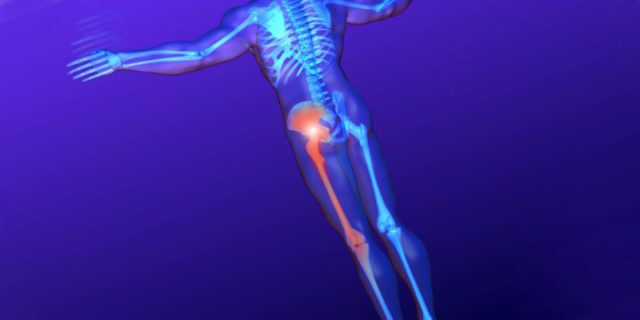
Contents of the page
- 1 Causes of sciatica
- 2 Sciatic nerve inflammation: symptoms
- 3 Diagnosis
- 4 Physiotherapy methods, exercise therapy
- 5 Surgical treatment
Sciatic nerve inflammation or sciatica is a pathological condition accompanied by severe pain syndrome. The sciatic nerves are the longest and largest, they begin in the lumbosacral spine, pass over the surface of the buttocks, thighs and in the region of the shin branches into small processes that extend to the tips of the fingers.
The sciatic nerve is very sensitive - the pinching and squeezing of the nerve roots is manifested with pain of varying intensity. The pain syndrome can be weak, or strongly pronounced, intolerable, preventing a person from moving and leading a habitual way of life. The disease requires a long-term comprehensive treatment based on the use of medications, physiotherapy procedures and methods of physiotherapy.
Causes of sciatica
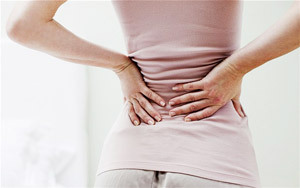
The most common cause of inflammation of the sciatic nerve is pathological processes in the sacrum and lower back. Nerve pincers are accompanied by the following conditions:
- displacement of the intervertebral disc;
- intervertebral hernia;
- osteophytes( bony growths);
- tunnel neuropathies( pear-shaped muscle syndrome);
- consequences of infectious diseases;
- hypothermia of the body;
- excessive physical activity;
- trauma to the spine or pelvic organs;
- post-injection abscesses;
- curvature of the spine( scoliosis, flat feet);
- tumor processes.
With hernial protrusion of the intervertebral disc, the roots of the spinal cord are infringed, against this background sciatic nerve inflammation develops. The development of sciatica is promoted by arthroses and chondroses, which are accompanied by the appearance of bone growths in the area of vertebral connection. They squeeze the nerve fibers and cause inflammation of the nerve fibers. A common cause of sciatica are osteochondrosis, spinal spine and trauma of its departments.
A specific role in the development of the disease is the intoxication of the body with alcohol, heavy metal salts and other toxic compounds. Often, the damage to the sciatic nerve causes toxins, secreted by pathogenic bacteria. In this case, sciatica occurs against the background of influenza, ARVI, scarlet fever, tuberculosis, malaria, syphilis or chronic systemic diseases( gout, diabetes).
Often the cause of sciatica are tumors of the spinal cord, both benign and malignant, as well as metastases of cancerous tumors of other organs, sprouting into vertebrae and intervertebral discs.
Sciatic Nerve Inflammation:

Symptoms The main symptom of sciatica is a pain syndrome, the intensity of which depends on the cause of the inflammation. The pain is usually localized along the nerve, that is, it is felt in the buttocks, popliteal fossa, hamstring and thigh. The nature of pain in sciatic nerve inflammation is mainly intense, shooting - according to the patients' reviews, resembles knife or electric shock.
Pain syndrome may be present continuously or occur sporadically. In this case, the attack usually begins with pain of low intensity, which soon become very strong. They exhaust a person, deprive him of rest and sleep. Any physical effort, movement, even coughing or sneezing - contribute to increased pain.
In addition to pain, the condition of the patient is aggravated by such manifestations as difficulties with flexion of limbs, decreased sensitivity and muscle tone, a violation of thermoregulation( cold feet), a feeling of crawling on the skin.
During the examination the doctor necessarily pays attention to the nature of the pain. This helps to establish the correct diagnosis and determine the area of inflammation. Specialists identify a number of specific manifestations that indicate the development of sciatica.
Symptoms of
- Symptom of landing( the patient can not sit down alone).
- Symptom Lasega( inability to lift a straight leg).
- Symptom of Sikar( pain syndrome increases when trying to bend the foot).
- Paresthesia( worsening limb sensitivity).At the initial stage, this syndrome is manifested by numbness and sensation of tingling of the skin of the buttocks and the back surface of the extremities from the side of the inflamed nerve. As the disease progresses further, the sensitivity disappears completely.
- Disturbance of motor function. As a result of prolonged infringement of motor fibers of the nerve, muscular weakness in the limbs grows. Over time, a person's gait is disturbed, he begins to limp on his aching leg.
- Dysfunction of the pelvic organs. They develop as a result of disturbances in the functions of the autonomic nervous system that occur against the background of infringement of the fibers passing through the sciatic nerve. In severe cases, symptoms such as burning during urination, incontinence of urine and feces or the development of chronic constipation occur.
Attacks of
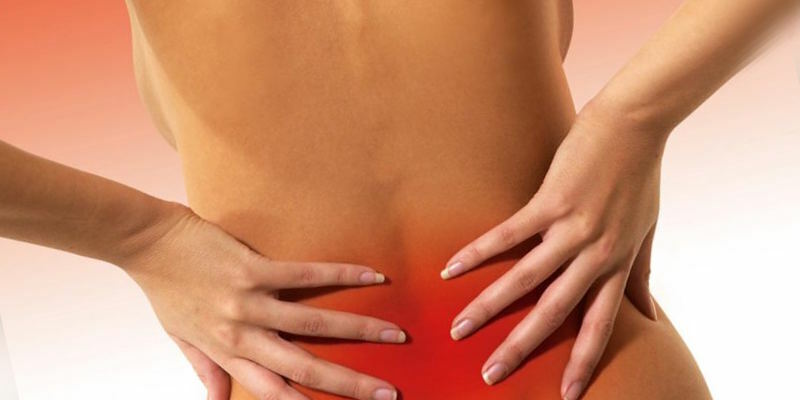
An attack of inflammation usually begins suddenly, most often at night. It can provoke not only chronic diseases, but also banal hypothermia or a severe stress factor and a nervous breakdown.
At the same time there are accompanying vegetative manifestations-puffiness, increased sweating of feet, reddening of the skin. In the infectious nature of the lesion, the pain is associated with high fever, chills, weakness and other symptoms of intoxication. Sometimes, with too sharp and severe pain, a person can lose consciousness.
In severe cases, the nerve function is completely impaired, there is a decrease in the volume of the gluteus, femoral or gastrocnemius muscle, temporary immobility occurs, the patient can not turn the foot, bend and unbend the toes. With a vast inflammatory process, the pain syndrome can become chronic and constantly remind oneself of relapses.
Symptoms and treatment for sciatica are closely related. Given the manifestations of the disease, the doctor can guess what causes the development of the pathological process and put a preliminary diagnosis. To confirm it, it is necessary to pass a number of additional inspections.
Diagnosis
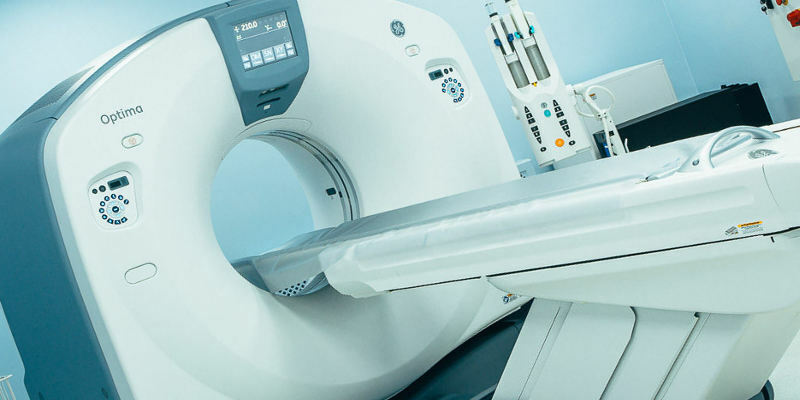 Diagnostic method: MRI
Diagnostic method: MRI To understand how to relieve sciatica, it is necessary to establish the cause of this condition. Diagnosis of sciatica is performed by a neurologist, appointing a number of laboratory and instrumental examinations of the patient. To determine the degree of damage to the sciatic nerve specialist performs a number of special motor tests, tapping the malleus tests the reflexes on the legs.
In the conditions of the clinic, the most accessible diagnostic method is conventional radiography, which allows to detect the presence of bone growths and other degenerative changes in the lumbosacral spine. For this, X-ray images of the spine are made in two projections, which allows to determine whether the sciatic nerve inflammation is associated with the pathology of the intervertebral discs.
If this method is not sufficient to make a diagnosis, the patient is referred for CT( computer tomography) or MRI( magnetic resonance imaging).These are the most informative methods, allowing to determine the cause of inflammation, if it is associated with pathological changes in the spinal cord or in the vessels of the nerve plexus.
When suspicion of tumor processes, radioisotope scanning of the spine is used. To determine the degree of disturbance of nerve conduction and contractility of the affected muscles, one resorts to the method of electroneuromyography.
If necessary, the patient is referred for additional examination and consultation to a narrow specialist - vertebrologist, rheumatologist, vascular surgeon.
How to treat sciatica?

Complex treatment for sciatica is aimed at arresting the pain syndrome, restoring the sensitivity and motor functions of the limbs and consists of the use of medications, manual therapy, massage, physiotherapy methods, therapeutic physical training. Widely used methods of alternative medicine - acupuncture, hirudotherapy( treatment with leeches), traditional medicine and sanatorium treatment( during periods of remission of the disease).
Drug medication for sciatic nerve inflammation

In the acute period of sciatica, a course of anti-inflammatory and analgesic agents is prescribed for the relief of severe pain syndrome. For this purpose, drugs from the NSAID group( Diclofenac, Orthofen, Indomethacin, Meloxicam, Ketoprofen), as well as strong non-narcotic analgesics( Sedalgin, Sedalgin Neo, Baralgin, Pentalgin) are used.
In severe cases, when the patient is suffering from severe pain that can not be cured by the aforementioned means, the doctor can prescribe opioid analgesics( Tramadol, Tramal, Tramalin).They should be taken under the supervision of the doctor in short courses, as these drugs are able to quickly cause addiction and drug dependence, they have many contraindications and side effects. In addition, for the relief of exhausting pain, novocaine or ultracain blockades are prescribed.
Corticosteroid hormones( Prednisolone, Hydrocortisone), prescribed in the acute period, help quickly suppress the development of the inflammatory process, remove puffiness and improve the mobility of the limbs. However, hormonal agents can not be used in all cases, they are prescribed only with strong swelling in the lumbosacral spine.
As supportive therapy use muscle relaxants, antioxidants, vitamin complexes and other drugs that help restore blood supply and nutrition of the affected nerves and normalize their functions.
Muscle relaxants( Sirdalud, Tizanidin, Midokalm, Tolperizon) well relax tension muscles, which eliminates pinching of nerve fibers, helps to reduce pain, restore sensitivity and volume of movements of the affected limb.
Complex preparations containing vitamins of group B( Kombilipen, Milgamma, Binavit) reduce the severity of neuralgic symptoms and restore the permeability of the nerve impulse along the fibers, which returns to the limbs the former sensitivity, relieves numbness and other unpleasant symptoms.
Angioprotectors and microcirculation correctors( Actovegin, Curantil, Trental) are used to restore impaired blood supply and nutrition of tissues. Such drugs fight with atrophic changes in muscles and repair damaged sciatic nerve structures. For the same purpose, vitamin complexes with the content of vitamins C, E, trace elements - copper, selenium and other nutrients are prescribed as antioxidants.
Metabolic drugs such as Mildronate, Inosine, Riboflavin, Elkar help to improve the nutrition of the nerve roots of the spinal cord and sacral plexus, thereby restoring the function of the injured sciatic nerve and returning the sensitivity and motor activity of the limbs.
Ointments for treatment of sciatica
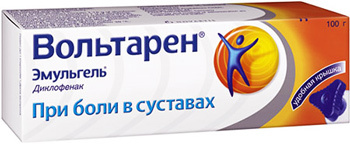 Photo: Voltaren Emulgel
Photo: Voltaren Emulgel Local external agents are prescribed as a supplement to the main course of treatment, since their main purpose is to alleviate the pain syndrome. In the treatment of sciatica, external agents with an irritating and warming effect are shown that improve blood circulation in the affected area and reduce the intensity of pain. In the sciatic nerve inflammation, the following drugs are prescribed:
- ointments based on snake and bee venom( Nayatoks, Apifor);
- ointments based on camphor or turpentine;
- external products with extract of hot peppers( Espol);
- gels, creams and ointments from the NSAID group( Voltaren Gel, Diclofenac, Nurofen, Indomethacin);
- preparations for external use with warming or irritating components( Finalgon, Viprosal, Capsicum).
External agents for sciatica are applied to the affected area 2-3 times a day. After treatment, the painful area is covered with a warm bandage to strengthen the heating effect of the local preparations.
Methods of physiotherapy, exercise therapy
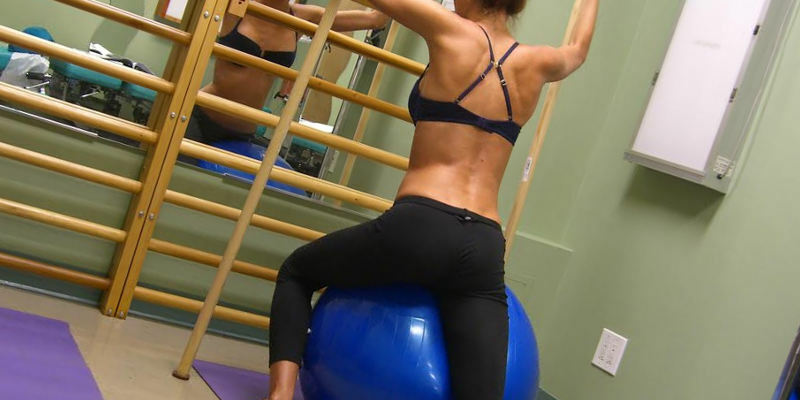
Physiotherapeutic treatment for sciatica is used during periods of remission of the disease, when pain is absent, but signs of eating and blood supply to the tissues and loss of sensation persist. The doctor can prescribe the following procedures:
- darsonvalization;
- dynamic currents;
- magnetotherapy;
- laser treatment;
- UHF;
- electrophoresis;
- massage;
- acupuncture.
Physiotherapy treatment relaxes muscles, eliminates nerve root clamps, restores mobility and sensitivity of limbs and allows to prevent and prevent repeated relapses of the disease.
With regard to massage, to restore muscle tone and circulation in the affected area, massage the lumbar region, buttocks, thighs, lower legs and feet. To achieve a stable therapeutic effect, it is necessary to conduct 10 sessions of therapeutic massage, lasting up to 30 minutes. Strengthen the action of massage procedures helps therapeutic gymnastics. Perform simple exercises can be at home or in a medical institution under the guidance of an experienced instructor.
Surgical treatment

Surgical operation for sciatica inflammation is recommended only in cases when the methods of medicamental and physiotherapeutic treatment do not give results.
To eliminate pinching of the nerve, one must resort to such types of surgical intervention as microdiscectomy and discectomy, the essence of which consists in the complete or partial removal of the intervertebral disc, which provokes the infringement of the sciatic nerve.
Treatment of sciatica in the home
Traditional healers can offer a lot of funds for the treatment of sciatica. But before using any of them, you should consult your doctor to avoid unwanted complications.
Beeswax .Compress with beeswax is a wonderful warming aid, which allows to reduce the manifestations of pain in sciatica. Before the procedure, the wax should be melt in a water bath and mold from it a cake to the size of the affected area. In a warm form, put a flat cake of wax to the sick zone, top it with a plastic wrap, warm it with a towel or rug and leave a compress for the night. The procedure can be done daily, throughout the week.
Tincture from pine buds .Grindings based on tincture contribute to the elimination of pain syndrome and reduce inflammation. Instead of pine buds, you can use spruce needles or dandelion blossoms. Vegetable raw materials are placed in a half-liter jar, stuffing it over the hangers, pour 500 ml of vodka and leave in a dark place for a week. Ready tincture is used for daily rubbing of the affected area.
Can massage .At home, you can independently do the procedure with a massage jar. First, the affected area should be lubricated with a warming cream or ointment based on horse chestnut, and then put the jar and move it in a circular motion clockwise. The duration of the procedure is 10 minutes, it should be performed every other day.



